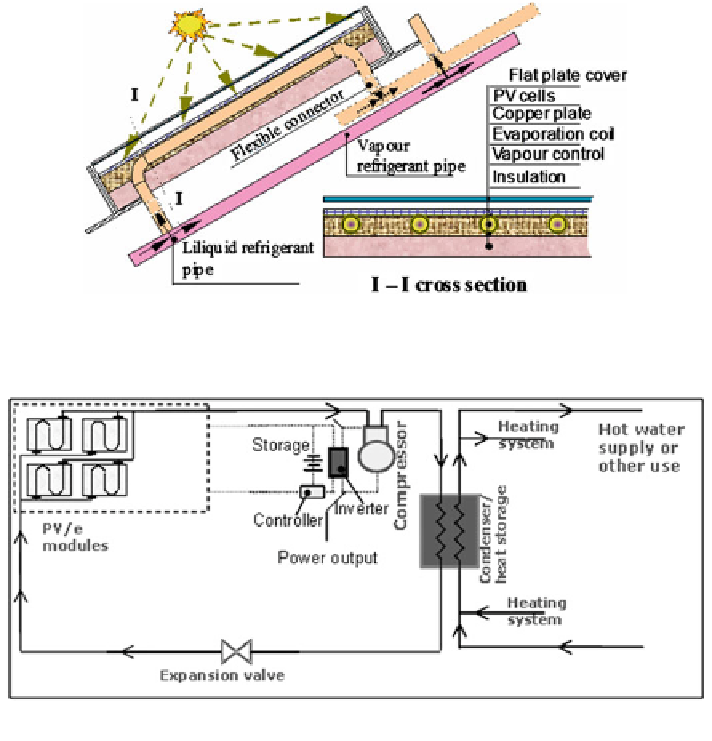Civil Engineering Reference
In-Depth Information
modules which allow a refrigerant to be evaporated when passing through the
modules. In this way, the coils would act as the evaporation sector of the heat
pump, which would allow the refrigerant to evaporate at a very low temperature,
e.g. 0-20 C. As a result, the PV cells would be cooled to a similar low tem-
perature, which would result in significant increase in the panels' heat and elec-
trical efficiencies. The compressor in the heat pump would increase the pressure of
the vapour generated from the panels and deliver it to the condenser to provide
heating. In operation, the compressor would be driven by the PV-generated
electricity, thus creating a solar-powered heat pump independent of fossil fuel
energy. Figure
7
gives a cross-sectional view of a glazed PV evaporator roof
panel, and Fig.
8
is the schematic of the PV/T-based heat pump system (Zhao
et al.
2011
).
Fig. 7
Cross-sectional view of the PV evaporator roof panel (Zhao et al.
2011
)
Fig. 8
PV/e roof-module-based heat pump and micro-generation system (Zhao et al.
2011
)

